Pregnant women whose household tap water had higher levels of lithium had a moderately higher risk of their offspring being diagnosed with autism spectrum disorder, researchers reported in JAMA Pediatrics.
Tag: Autism
Medical experts available: OTC Narcan, Autism Acceptance Month and Black Maternal Health Week
Ochsner Health has medical experts on standby to discuss the groundbreaking FDA approval for over-the-counter Narcan for overdose, many topics related to autism as we promote Autism Acceptance Month in April, including signs of Autism in adults. Black Maternal Health…
Learning to love music
Cross-college innovation helps children with autism while providing high-impact learning experience
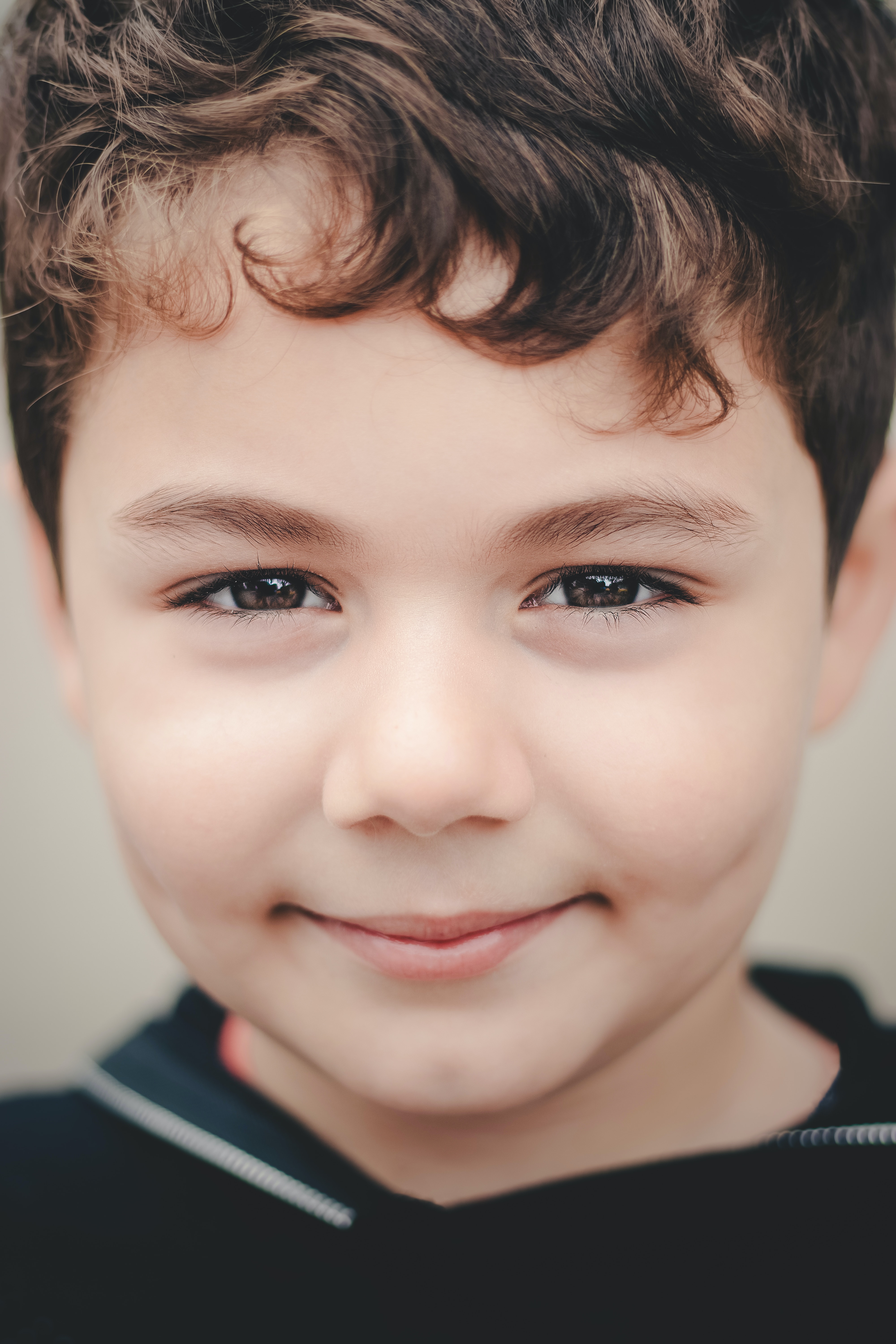
Utah Findings Show Shifting Demographics of Children Identified with Autism
For the first time, a new analysis found that among Utah children aged 8 years old, rates of autism were equal in White children and children from historically underserved populations, including Hispanic and Pacific Islanders.
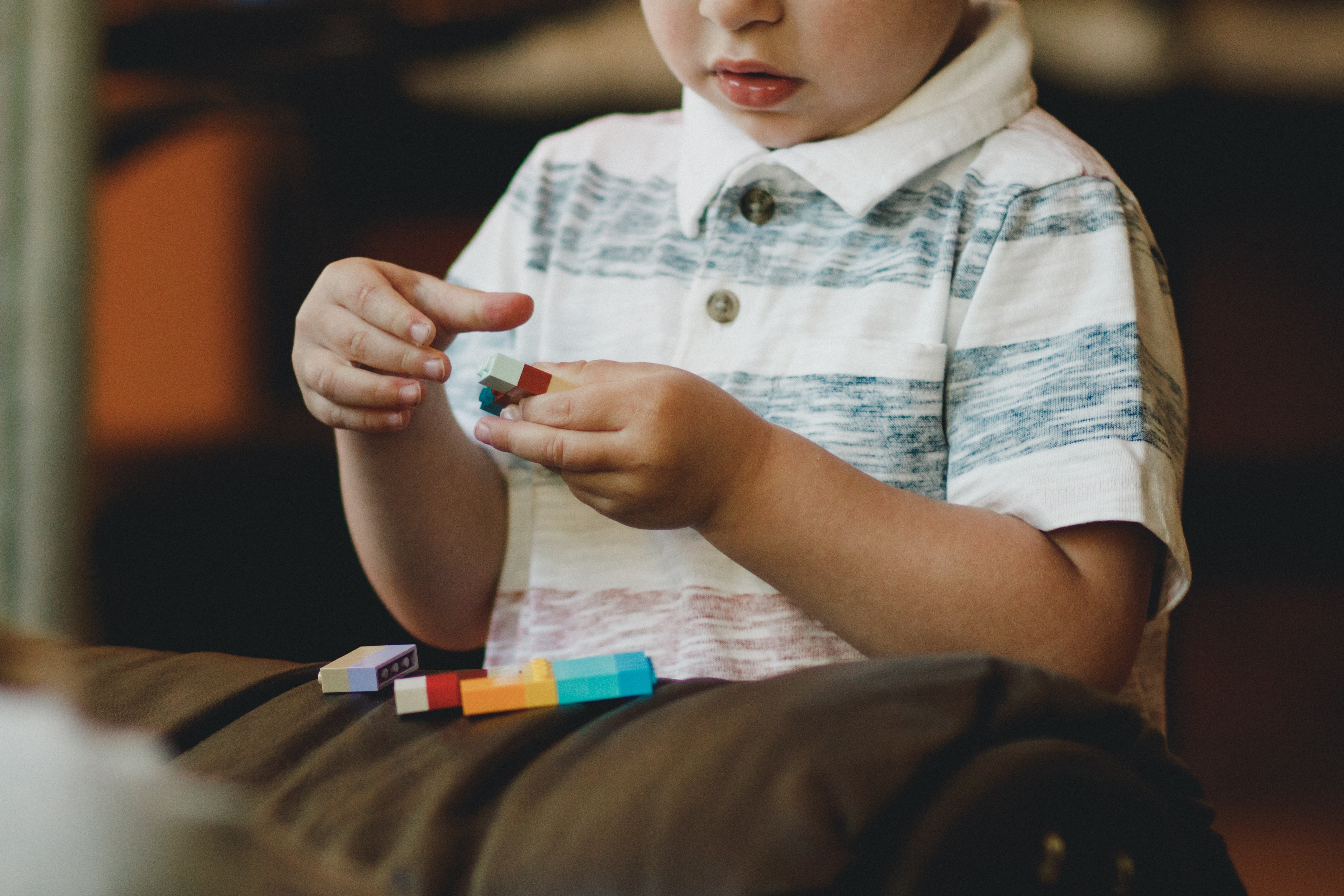
Autism Rates Continue to Rise in California
Autism rates are on the rise in the United States, and especially in California. UC San Diego researchers link changing rates and demographics to increased early-detection.
CDC Report Shows Overall and Maryland Autism Rate Increase Among 8-Year-Olds
Researchers at the Johns Hopkins Bloomberg School of Public Health contributed to a new Centers for Disease Control and Prevention report that found a continued rise in the overall prevalence of autism among 8-year-olds in 2020, the year the data was collected, as well as notable sex and racial/ethnic trends.
Rates of Autism Climb to New Highs in the U.S., With California Setting Record Numbers
New federal studies coauthored by autism experts at Rutgers found that more children have been diagnosed with autism than at any time since monitoring began more than two decades ago.
According to the U.S. Centers for Disease Control and Prevention (CDC), about 4 percent of 8-year-old boys and 1 percent of 8-year-old girls, have autism in the U.S. These estimates are the highest since the CDC’s Autism and Developmental Disabilities Monitoring (ADDM) Network was created in 2000.
Researchers Identify Novel Genes That May Increase Risk For Schizophrenia
Researchers have identified two previously unknown genes linked to schizophrenia and newly implicated a third gene as carrying risk for both schizophrenia and autism. Led by the Icahn School of Medicine at Mount Sinai, the multi-center study further demonstrated that the schizophrenia risk conferred by these rare damaging variants is conserved across ethnicities. The study may also point to new therapeutics. The findings were published in the March 13 online issue of Nature Genetics.
Children at Risk for Autism Struggle to Notice Mismatched Audio and Video
Rutgers research that may eventually enable far earlier autism diagnoses shows that typically developing infants perceive audio-video synchrony better than high-risk for autism infants.
UC Davis study uncovers age-related brain differences in autistic individuals
Differences in genes involved in inflammation, immunity response and neural transmissions begin in childhood and evolve across the lifespan in brains of people with autism, a UC Davis MIND Institute has found.
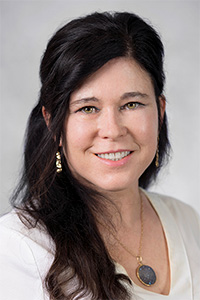
Toddlers’ Attention to ‘Motherese’ Speech May Be Used to Diagnose Autism
Toddlers’ level of attention to “motherese” speech can be used as a biomarker for autism spectrum disorder (ASD). UC San Diego scientists developed a new eye-tracking test to measure it, which can accurately identify toddlers with a subtype of ASD.
IQ changes over time may help track development, guide intervention in autistic youth
A new study by UC Davis MIND Institute researchers finds that changes in the IQ level of autistic youth may help predict their developmental path as adolescents.
Study Logs Five-Fold Increase in Autism in New York-New Jersey Region
Documented cases of autism spectrum disorder (ASD) in the New York–New Jersey metro region increased by as much as 500 percent between 2000 and 2016, with the highest increase among children without intellectual disabilities, according to a Rutgers study.
Federally funded studies into treatment for chronic conditions overlook efficacy in adults with autism, analysis finds
Physical health disparity conditions in autistic adults have not been the focus of any research funded by the U.S. National Institutes of Health (NIH) in the last four decades, an analysis of a federal database found.
Trial to test whether drug that targets gut bacteria can improve irritability in teenagers with autism
A new trial will test whether a medication that targets gut bacteria can also improve irritability in teenagers with autism spectrum disorder.
Gene Mutation Leading to Autism Found to Overstimulate Brain Cells
Scientists looking to understand the fundamental brain mechanisms of autism spectrum disorder have found that a gene mutation known to be associated with the disorder causes an overstimulation of brain cells far greater than that seen in neuronal cells without the mutation.
The Rutgers-led study, spanning seven years, employed some of the most advanced approaches available in the scientific toolbox, including growing human brain cells from stem cells and transplanting them into mouse brains.
Adding Sensory Integration to Autism Assessments may yield More Individualized Treatment
Additional insights can help guide interventions that can assist individuals in processing and understanding their surroundings better.
Brain Changes in Autism Are Far More Sweeping Than Previously Known
The new study finds brain-wide changes in virtually all of the 11 cortical regions analyzed, regardless of whether they are higher critical association regions – those involved in functions such as reasoning, language, social cognition and mental flexibility – or primary sensory regions.
How Do You Measure Success in Autism Clinical Trials?
Shafali Spurling Jeste, MD, shares early findings—and a critical challenge—from the Autism Biomarkers Consortium for Clinical Trials. How do you know if a treatment for autism is effective? That’s a question that has no easy answer—due in large part to the heterogeneous nature of autism spectrum disorder.
Yes, People with Autism Have Empathy
A research group led by Ben-Gurion University of the Negev has proposed a new concept for predicting autism and autistic traits. Empathic disequilibrium combines two types of empathy into a single scale for the first time.
Autistic People Are More Likely to Experience Depression and Anxiety During Pregnancy
Autistic people are more vulnerable to depression and anxiety during pregnancy, according to new research from the University of Cambridge.
Brain-Like Organoids Grown in a Dish Provide Window into Autism
Whatever you do, don’t call them “mini-brains,” say University of Utah Health scientists. Regardless, the seed-sized organoids—which are grown in the lab from human cells—contained an array of neural and other cell types found in the cerebral cortex, the outermost layer of the brain involved in language, emotion, reasoning, and other high-level mental processes. They are providing insights into the brain and uncovering differences that may contribute to autism in some people.
Rare Human Gene Variant in ADHD, Autism Exposes Fundamental Sex Differences
Key differences in male and female mice brains provide new insights into how sex determines the mechanisms by which distinct synapses monitor and regulate dopamine signaling. The impact of sex differences is particularly pronounced when the mice express a human genetic variant found in boys with either ADHD or autism. Behavioral generalizations across the sexes may limit diagnosis of mental illness, especially if one sex translates alterations into outward signs such as hyperactivity and aggression vs. more internal manifestations such as learning, memory and mood, even when the same molecular pathology is at work.
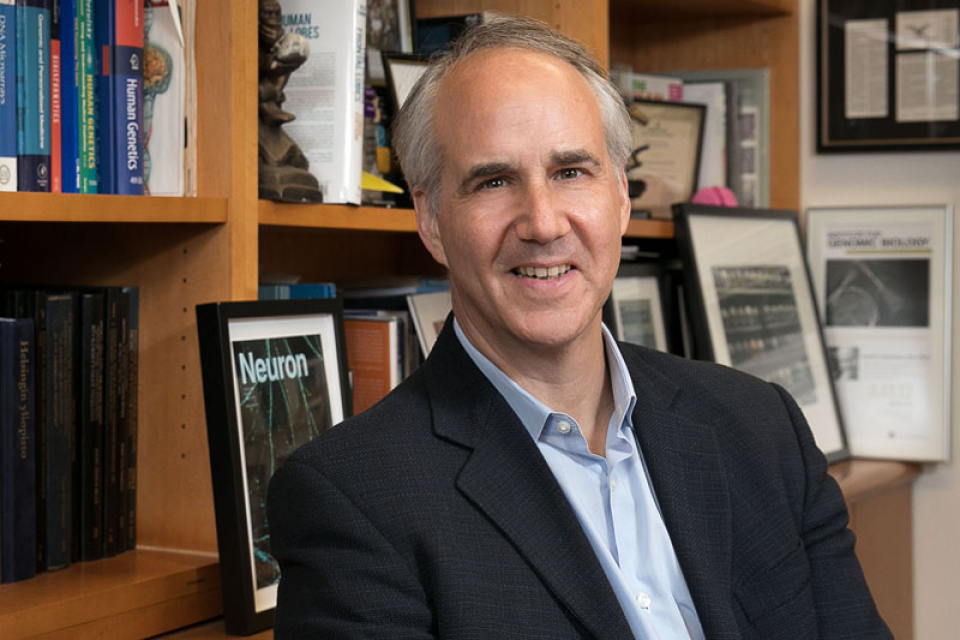
UCLA researcher awarded National Academy of Medicine prize for work on genetics of autism
Dr. Daniel Geschwind was awarded the National Academy of Medicine’s top annual prize in mental health in recognition of his pioneering research and leadership in autism genetics.
In-school occupational therapy creates positive education experiences for kids with autism
In an Australian first, South Australia has appointed a new Assistant Minister for Autism, tasked to increase autism supports in public primary schools. This could not have come at a more urgent time as new research from the University of South Australia shows that parents world-wide report a lack of awareness and understanding of the unique learning needs of autistic children across all levels of mainstream school.
Eye test could screen children for autism
Measuring how the eyes’ pupils change in response to light—known as the pupillary light reflex—could potentially be used to screen for autism in young children, according to a study conducted at Washington State University.
Only Half of Children With Autism Receive Early Intervention Services
Despite a federal mandate requiring access to early intervention programs (EIP) for children with disabilities, fewer than half of autistic children in four New Jersey counties received services before 36 months of age, according to a Rutgers study.
New Resource: Mental Health Guide for Autistic College Students
Vanessa Bal, associate professor at the Graduate School of Applied and Professional Psychology and the Karmazin and Lillard Endowed Chair in Adult Autism and Evan Kleiman, assistant professor of psychology at Rutgers, are available to discuss a newly created resource…
Scientists develop blueprint for turning stem cells into sensory interneurons
Key takeaways:
• Just like the real thing. The stem cell–derived interneurons, which play a role in sensations like touch and pain, are indistinguishable from their real-life counterparts in the body.
• Tomorrow’s therapies. In addition to potential treatments for injury-related sensation loss, the discovery could lead to new methods for screening drugs for chronic pain.
• Moving forward. While stem cells from mice were used in the research, scientists are now working to replicate the findings with human cells.
Social-sexual education for individuals with neurodevelopmental disabilities
People with neurodevelopmental disabilities are often not given the tools to create romantic relationships in a meaningful, safe way. This puts them at risk for sexual abuse. A new educational program, tested in partnership with the UC Davis MIND Institute, may help foster healthy, romantic relationships.
Summer Institute focused on life after high school for kids with autism, ADHD, more
The UC Davis MIND Institute’s annual Summer Institute on Neurodevelopmental Disabilities is focused on strategies to support individuals with ADHD, Down syndrome, autism and more as they prepare for life after high school. The free, virtual event will take place Aug. 3 from 9:00 a.m. – 1:15 p.m. and is open to all.
Autistic adults have become increasingly visible in media, books, television, and more in the past decade, but challenges with representation persist
Researchers documented a shift toward more representation for adults in popular portrayals of autism, which have historically focused on children.
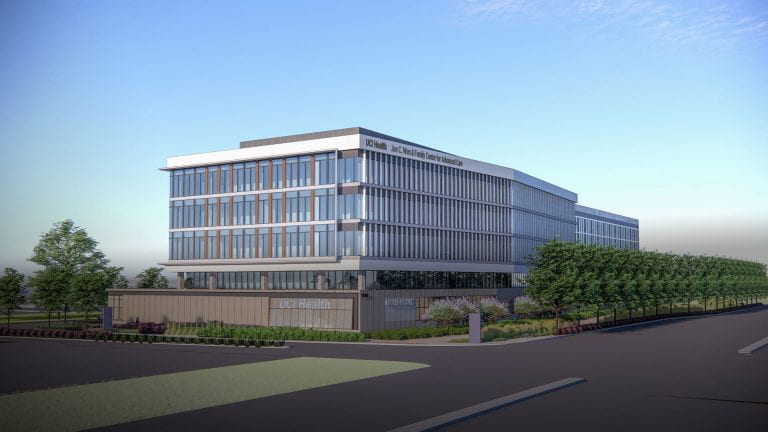
Joe C. Wen and family donate $20 million to support the new UCI Health Center for Advanced Care
Irvine, Calif., June 27, 2022 — Supported by a $20 million gift from Joe C. Wen and his family, the UCI Health outpatient clinical facility at the new UCI Health–Irvine complex will bring specialty clinical expertise closer to coastal and south Orange County residents on the UCI campus. “The Joe C. Wen & Family Center for Advanced Care at UCI Health–Irvine will play a special role in the life of south Orange County because of our unique ability to marshal all the resources of a comprehensive research university in support of delivering the best and most up-to-date care,” said UCI Chancellor Howard Gillman.
A mother’s blood may carry the secret to one type of autism
The reactivity of a mother’s autoantibodies to specific fetal brain protein patterns may predict the child’s diagnosis with a type of autism known as MAR ASD. MAR ASD was present in around 20% of kids with autism in Arkansas and Philadelphia samples and was linked to more significant autistic traits.

When it comes to ADHD and ASD, the eyes could reveal all
In the first study of its kind, researchers found that recordings from the retina could identify distinct signals for both Attention Deficit Hyperactivity Disorder (ADHD) and Autism Spectrum Disorder (ASD) providing a potential biomarker for each condition.
Opioid Analgesic Fentanyl May Cause Autism-Like Behavior in Young Mice
Fentanyl, a mu-opioid receptor agonist, is one of the most commonly used analgesics in the hospital and may induce long-lasting behavioral and somatosensory impairment in rodents.
Stem Cells Either Overproduce or Underproduce Brain Cells in Autism Patients
Analyzing brain stem cells of patients with autism spectrum disorder (ASD), Rutgers scientists have found evidence of irregularities in very early brain development that may contribute to the neuropsychiatric disorder.
Artificial Intelligence Reveals Links Between Individual Differences in Brain Anatomy and Differences in Autism Spectrum Disorder Symptoms
Differences in behavior among people with Autism Spectrum Disorder (ASD) are closely related to differences in neuroanatomy – the shape of a brain – a team of Boston College neuroscientists report today in the journal Science. This discovery could help to understand the causes of ASD, and to develop personalized interventions.
Broad Spectrum of Autism Depends on Spectrum of Genetic Factors
UC San Diego researchers report significant progress in understanding how the combined effects of rare mutations and common genetic variation in determining whether a child will develop ASD and its consequential effects.
A wet nose and a wagging tail opens up a new world for autistic kids
A new study looking at the impact of an autism assistance dog for children and their parents has made an unexpected discovery: the dog has expanded their world, literally, giving them the confidence to visit a lot more places.
Adaptive swim classes build confidence, safety skills for autistic children
Based on the positive results of a new pilot study offering personalized aquatic occupational therapy for 19 autistic children, researchers at The Ohio State University Wexner Medical Center and College of Medicine will expand the program to include 36 autistic children over the next year.
Autistic Individuals Have Poorer Health and Healthcare
Autistic individuals are more likely to have chronic mental and physical health conditions, suggests new research from the University of Cambridge. Autistic individuals also report lower quality healthcare than others.
Visual System Brain Development Implicated in Infants who Develop Autism
For the first time, scientists have found that brain differences in the visual brain systems of infants who later are diagnosed with autism are associated with inherited genetic factors.
Adaptive swim classes build confidence, safety skills for children with autism
From SOURCEARU.com Based on the positive results of a new pilot study offering personalized aquatic occupational therapy for 19 children with autism, Ohio State University researchers will expand the program to include 36 children over the next year. Initial results…
Do early therapies help very young children with or at high likelihood for autism?
In an analysis of reviews published between 2009 and 2020 that assessed therapeutic or educational interventions for very young children with or at high likelihood for autism, researchers found that certain types of interventions—called naturalistic developmental behavioral interventions, developmental interventions, and behavioral interventions—can provide benefits, but there were significant limitations in the quality of the evidence and many differences in how studies were performed.
Does autism begin in the womb?
An international research group led by Professor Toru Takumi (Senior Visiting Scientist, RIKEN Center for Biosystems Dynamics Research) and Researcher Chia-wen Lin at Kobe University Graduate School of Medicine has shown that idiopathic autism*1 is caused by epigenetic*2 abnormalities in hematopoietic cells during fetal development, which results in immune dysregulation in the brain and gut.
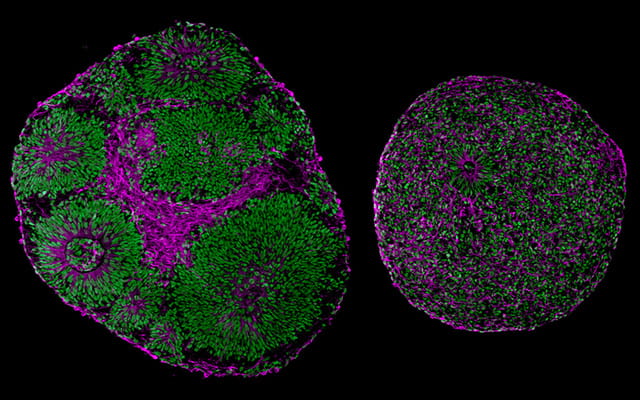
Gene Therapy Reverses Effects of Autism-Linked Mutation in Brain Organoids
UC San Diego scientists use lab-grown human brain tissue to identify neural abnormalities in Pitt-Hopkins Syndrome and show gene therapy tools can rescue neural structure and function.
Autism, ADHD and school absence are risk factors for self-harm, according to new study
Research led by King’s College London and South London and Maudsley NHS Foundation Trust has analysed factors associated with self-harm in over 111,000 adolescents aged 11-17 years old.
Study suggests early self-awareness of autism leads to better quality of life
People who learn they are autistic when they are younger may have a heightened quality of life and sense of well-being in adulthood.
Report: Autistic children at the intersection of race and poverty experience compounding health risks
A report from the Autism Intervention Research Network on Physical Health (AIR-P), a multi-site collaboration housed within UCLA Health’s Department of Medicine, highlights the intersection of autism, poverty and race/ethnicity and their compounding impact on health and health care.